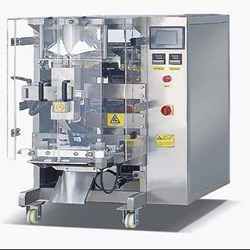How Vertical Form Fill Seal Machines Offer A Competitive Advantage

By Sam Lewis

Dependability, efficiency, flexibility, and simplicity are all key factors to consider when choosing bagging operations for your food-production facility. The right solution for your company should include all these factors and give back top-notch results on your investment.
Current vertical form fill seal (VVFS) machines offer flexibility in that they are able to serve a variety of different markets — meat and poultry, coffee and other ground products, dairy, snacks, bakery, and confectionary — while exceeding industry production and packaging demands. Companies in these industries seek the most up-to-date and innovative VVFS technologies available to increase bagging speeds, decrease downtimes, and ultimately boost bottom lines.
Not only are food processors, manufacturers, and packagers demanding speed, efficiency, and reliability from VVFS machines, they also want VVFS machines equipped with features to meet their operation’s unique needs. Some of these features include: stainless steel construction, touch screens, operating systems with multiple languages, modular designs, reduced energy use, accelerated bagging speeds, USB-based data systems for performance analytics, and compatibility with multiple bag sizes. Additionally, modern VVSF machines can come equipped with customized equipment — adjustable seals, attachments for flat-bottom bags, tool-free changeover capabilities, vacuum pull belts, and internet access — for specific industry needs.
Obviously, VVFS machines with so many features and customizations are a big investment. However, the advanced and unique features of these machines are what allow your company’s investment to be returned. Faster packaging rates accompanied by efficient heating jaws allow significant time to be trimmed from bagging times, which, in turn, increases output.
Additionally, the built-in, data-collection systems of modern VVFS machines are able to detect obstructions in sealing points. This helps reduce the number of products with bad seals with greater efficiency than previous VVFS machines. Furthermore, because these modern bagging machines are able to process more packages in a shorter timeframe, running costs are reduced. When all is said and done, highly-efficient VVFS machines pay for themselves over a relatively-short time period because they automate the entire packaging process with very little upkeep and repair requirements.
